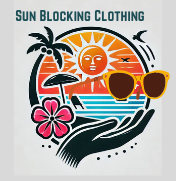
Can The Sun Change Your “DNA?”
What happens with the Sun And Your DNA? Do you have a form of skin cancer waiting for you in your future?
You very well may develop sun-caused skin cancer. That is why I want to warn you about how to protect your skin.
At some point along the way, if you continue to expose your skin to the sun, your DNA may receive damage. When this happens. the cell is no longer able to repair itself correctly. All it takes is just one overexposure time, and your DNA is damaged beyond repairing itself.
You have no way of knowing when your own one time too many will occur. It may be the first time you get a slight tan, or when you get that miserable sunburn. There is no way to tell how far away you are from the “one too many” sun overexposure events.
Is your “one too many” from a weekend of water skiing? Or is it from the one day you had a mild sunburn on your arms and back of your hands? You were already a parent by then!
Your “One Too Many”
Knowing when to stop getting out in the sun because you have used up your 25 free passes might make sun protection easier. That knowledge would surely save lots of skin damage.
Unfortunately, we don’t know what the “one too many” free pass number really is. We do know that sun damage is accumulative.
The 4 Most Common Skin Cancers
Most Common
- BASAL CELL CARCINOMA: Basal cells are the round cells that form your lower epidermis. Most skin cancers start from this type of cell. Basal cell carcinoma most often develops on your head and neck, but it can be found anywhere on your skin. This form of skin cancer, basal cell carcinoma is usually caused by sun exposure. It can develop in people who were the recipients of radiation therapy as children. This type of skin cancer usually grows slowly and rarely spreads to other parts of the body. When treated early, you will find this skin cancer easy enough to control.
2nd Most Common
- SQUAMOUS CELL CARCINOMAS: Most of your skin is made up of flat, scale-like cells that we call squamous cells. Squamous cell carcinoma is mainly caused by sun exposure, so it may be diagnosed in many regions of your skin. It can also develop on skin that has been burned, damaged by chemicals, or exposed to x-rays. Squamous cell carcinoma is also can be found on your lips; or a scar. Early treatment is important here as well as these are deeper in your skin layers.
3rd Most Common
- MERKEL CELL CANCER: Merkel cell cancer is a rare cancer, but can be highly aggressive, or fast-growing. It starts in hormone-producing cells just beneath the skin and in the hair follicles. Usually, it is found in the head and neck region. Merkel cell cancer may also be called neuroendocrine carcinoma of the skin. Early treatment will usually result in your being able to control this skin cancer.
Most Serious
- MELANOMA: The deepest layer of your epidermis is located just above your dermis. This layer contains cells called melanocytes. Your Melanocytes produce your skin’s pigment or color. Melanoma begins when healthy melanocytes change and grow out of control, forming a cancerous tumor. This is the most dangerous of all skin cancers because it is harder to detect. If a tumor is discovered early enough, it may be removed by surgery.
Skin Basics
Your skin is your body’s largest organ.
So, your skin protects your body from infection and injury as well as helps regulate your body temperature. Your skin also stores water and fat plus it produces vitamin D.
I like to think of our skin as a body sock. This sock protects us from outside problems. Skin cancer is like a hole or worn place on the sock. That place is weak and may not be able to protect us as well.
Our skin is made up of 3 main layers:
- The epidermis. The outer layer of your skin. This is where basal cell carcinoma develops.
- The dermis. The inner layer of your skin. This layer is where you will find the squamas cell carcinoma will develop.
- The hypodermis. The deep layer of fat. Here is the layer that will be where melanoma forms.
Time To Quit Ignoring DNA Damage
Melanoma represents one form of DNA damage. The damage is permanent and at this point, not able to fix itself. The first round of overexposure may only result in minimum damage. The next time the damaged cells will suffer more and deeper damage. Every exposure builds to the time that spot on your body can not heal itself.
Melanin determines the color of your skin. Your amount of melanin is primarily determined by your genetic inheritance. But exposure to sunlight also alters your skin color.
When the cells in our skin layers lose the ability to turn off melanin production and run unchecked, producing more melanin cells, tumors will form. Your cells that produce melanin get damaged. The cell part that is damaged is the part that contains the on and off switch for melanin.
That cell can no longer quit producing melanin even though enough has been produced. The DNA that controls the off switch receives damage. The overproduction will eventually make a tumor. When removal of the tumor happens soon enough there can be no lasting problems.
When the overproduction continues, often the growth of more tumors will continue as well. This is the most dangerous form of skin cancer. When your body is screaming, “produce melanin” at the cellular level, all the melanin cells in your body will respond by growing melanin. The DNA damage has taken the ability to turn off the switch when enough is made.
DNA Damage Results In Melanoma
Melanoma is not a pleasant subject. As well, it is one I knew nothing about. We haven’t had a personal experience with melanoma, and until now, I didn’t pay attention.
However, it is time to change this. It is time to understand how it affects us so we can do a better job of protecting ourselves.
Remember, skin cancer is preventable. It is caused by too much sun or UV exposure on your skin.
Melanoma is the most dangerous form of skin cancer. It often is hanging around in the background, unknown to you, in your body until it has become difficult to treat.
We simply must know more about this kind of cancer. Understanding how we can protect ourselves will enable us to stay safer. Becoming aware is a great way to start protecting ourselves. Skin Cancer Awareness
The Price Of Too Much Sun
Here in central Texas most of us love the warm feeling of the sun on our faces, on our skin.
We have the opportunity to have fun in the sun because we have so many days of sunshine. This allows us to socialize with friends and families and in general enjoy the calming benefit of the sun and being outdoors.
When we say nature, we are always including the sun.
With so much sun, and so much to do outside it is not surprising that we expose ourselves to the sun often. Daily sunscreen is important for protecting your skin from aging, as well as getting too much sun.
Wearing a sun blocking hat, long sleeve sun blocking shirts, sunglasses, and taking breaks often in the shade or back in the house will protect you further. Adding sun block clothing is a sensible way to help protect your skin from the sun. Do Sun Blocking Shirts Work?
Damaging Your DNA
When the sun’s rays hit your skin, your DNA is affected by the bit of energy present in the sun’s rays or UV rays that make up the sunlight.
If the energy from the sun rays is extra strong, as during the hours of 10 AM to 4 PM and you are exposed a bit longer than expected, the DNA of a cell or maybe 10 cells can be destroyed.
Maybe not destroyed, but enough that the cell can’t grow back as it normally would. You have a rough dry spot on your face, arm, or neck.
Remember this is not a one-time thing. You can redamage the same cells next Saturday when you go to the beach or clean your windows or whatever has you out in the sun.
This time the cell is already no longer a 100% cell, and it may damage in half the time. And soon you have a spot that does not heal and is subject to infection, as open wounds on your skin are. (Remember the hole in the body sock)
Now, let’s take this a bit farther, remember we are only 2 weeks in on the summer. This time we take the kids to Water World in San Antonio and there are lines.
Understanding More About Too Much Sun
L-o-n-g lines. Standing in line doesn’t allow shade all the time. You may be able to stay in this shade some, but the cement reflects all those sun rays. Our sun exposure comes often and sometimes unexpectedly in the warm sunny climate we live in.
Yes, solar rays bathe us in the summer months. This is one of the big perks of the season. However, too much sunlight comes with costs.
When you talk about sunlight and the sunburns that could occur, it’s important to understand how your sun exposure relates to DNA damage.
Add to that the skin cancer you are risking. As you prepare for your summer, consider what you know about sunlight. Be aware of the dangers to your DNA. Protection is important and necessary. Please get your sun protection gear ready for use. You know you will need it.
A Bit More Information About Dangers
Besides the visible light, sunlight contains ultraviolet (UV) waves of energy. The UV rays have a wide range of effects on your body.
Generally, there are 3 different categories of UV waves that we define by the amount of energy they carry.
- The most energy is the UV-C waves.
- Next we the UV-B waves.
- And then UV-A waves.
The higher the energy, the more potentially harmful it is. Fortunately, the vast majority of UV-C light is absorbed by our atmosphere and very rarely makes it to Earth’s surface. (However, remember the places in our world that have lost their Ozone protection. And how science is warning us that we are all living with less Ozone protection than we had as children)
In contrast, UV-B and UV-A light does reach us, and it’s these rays that have the potential to cause harm1.
Skin Cancer Overview
While no one likes the pain of a sunburn, the biggest concern with sun exposure is the threat of skin cancer. The term “skin cancer” actually refers to a group of different cancers that all originate in your body’s largest organ, your skin.
Melanoma is the most famous of these, but it’s less common than the other two major forms of skin cancer. Basal Cell Carcinoma (BCC) and Squamous Cell Carcinoma (SCC) together account for 95% of skin cancer cases in the United States.
Important Differences In These Cancers
One of the many important differences between these cancers is that BCC and SCC are significantly less life-threatening than melanoma.
Your risk of developing all three types of skin cancer increases with exposure to UV light (from the sun and/or artificial sources like tanning beds). This skin cancer risk is thought to be the result of multiple factors.
UV light on your DNA causes a lack of stability in your ability to heal and restore your skin cells. Your life program has been altered or destroyed. It is no longer able to do what it was designed to do.
When UV-B waves collide with your DNA, they transfer that energy in the light waves to the DNA and can cause multiple forms of damage.
Results Of DNA Damage
A common type of damage is the formation of abnormal physical links between your DNA bases. These links may allow changes in your DNA structure. After a while, this may eventually lead to changes in your DNA sequence if they are not repaired correctly.
Remember, life on Earth evolved with sunlight, which means we have mechanisms to detect and repair this damage. Your DNA can repair proteins that work together. Within your, DNA is a coordinated program to repair the UV-caused damages and maintain its ability to rebuild your skin.
While these repair proteins are extremely effective, some damages lead to changes in the DNA sequence if the damage is not repaired quickly enough, or correctly.
Most of the time these changes are harmless, but occasionally they disrupt the function of an important gene. If this happens to enough important genes in a cell, it can begin to behave abnormally.
Can You Go Out In The Sun?
Does this mean you’ll automatically get cancer if you go out into the sun? Your body is very well equipped to handle the damaging effects of sunlight. It is too much sun exposure ( enough to give you bad sunburns) that does increase your risk.
Fortunately, you can reduce this risk by wearing sun-blocking clothing and every 2 hours applying broad-spectrum, high-SPF sunscreens to all sun-exposed areas.
These sunscreens are designed to filter out some of the UV light and are very effective in decreasing the amount of DNA damage you experience as you are out and about.
So as you are getting ready for some summer fun, remember to enjoy the sun responsibly. Help your body protect its DNA and healthy skin.
DNA Damage After Sunset?
The sun can cause cancerous DNA damage in your skin cells even after it sets, according to a new study.
An international team of scientists has found that groups of out-of-control growth signals generated by ultraviolet light can cause damage to your DNA long after your exposure is over.
They can do this with the aid of compounds derived from melanin. Melanin is a pigment that is known to shield mammals from burns and other harmful UV effects. The melanin-assisted process creates lesions known as cyclobutane pyrimidine dimers.
More DNA Damage
In your DNA, this can lead to mutations that cause melanoma, a type of skin cancer. The most fatal is skin cancer.
https://www.sciencedirect.com/topics/medicine-and-dentistry/pyrimidine-dimer
These lesions are identical to the well-known genetic changes caused when UV light directly strikes DNA. “But at least half of the dimers you get come in the dark, rather than during your trip to the beach,” a Yale University Study
These chemically caused lesions can take hours to evolve. When direct DNA damage occurs within picoseconds of exposure.
Using techniques including mass spectrometry and high-performance liquid chromatography, the researchers identified a previously unrecognized process. A process that could play a significant role in melanomas.
There’s no other way to explain how you get the damage after you turn the light off, a chemist at the University of Washington in St. Louis, who reviewed the findings of this research group.
UV Damage Of Your DNA
Ultraviolet light kills cells by damaging their DNA. The light initiates a reaction between two molecules of thymine, one of the bases that make up DNA. The resulting thymine dimer is very stable, but repair of this kind of DNA damage usually happens by removing the two bases and filling in the gaps with new nucleotides is fairly efficient. However, this repair process can break down when the damage is extensive.
Longer Exposure Times Is Dangerous
The longer you expose your skin to UV light, the more thymine dimers are formed in the DNA. Longer exposure increases the risk of an incorrect repair or a “missed” dimer.
If your cellular processes are disrupted because of an incorrect repair or too much remaining damage, the cell cannot carry out its normal functions.
At this point, there are two possibilities, depending on the extent and location of the damage:
- If the damage is not too extensive, then you will have precancerous cells or cancerous cells will be created from the healthier cells.
- If it is widespread damage, the cell will die
Will you make your skin safer from this kind of sun damage? Will you be aware of how you can be safe and still enjoy the sun?

Sami’s Take On Can The Sun Change Your DNA?
Get in the habit of protecting your skin. Help your family learn to protect themselves. Our loss of a good thick Ozone has put more of us in danger of DNA damage. Grab a shirt and your sunglasses. Wear a sun hat, use sunscreen, and reapply often. Add breaks from the sun to a shady area, and stay hydrated.
Your DNA is affected when you no longer heal back to smooth skin. Like the DNA on the back of my hands. I have thin skin from aging, and I have ugly dark spots discoloring my hands. Unfortunately not that unusual for someone who has lived as many years as I have in a very sunny climate.
It is obvious to me that any more time in the sun for the backs of my hands will be disastrous. Lack of knowledge as well as ignoring some changes that would have protected my hands.
Had I followed my friend’s example I could have avoided so much sun damage.
Another case of old quick and smart late. Don’t let that be your story.
Just a few steps to stay healthy and keep your DNA on track.
